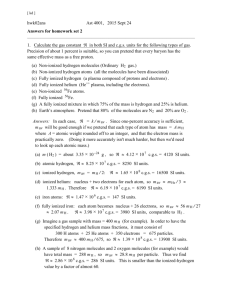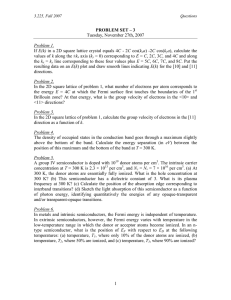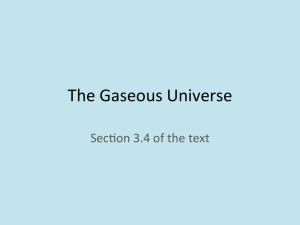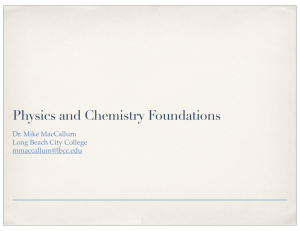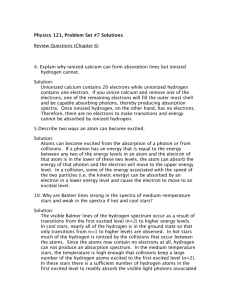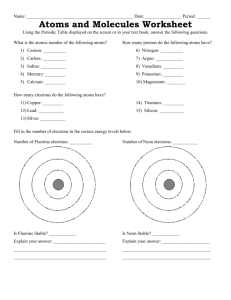hwk02
advertisement
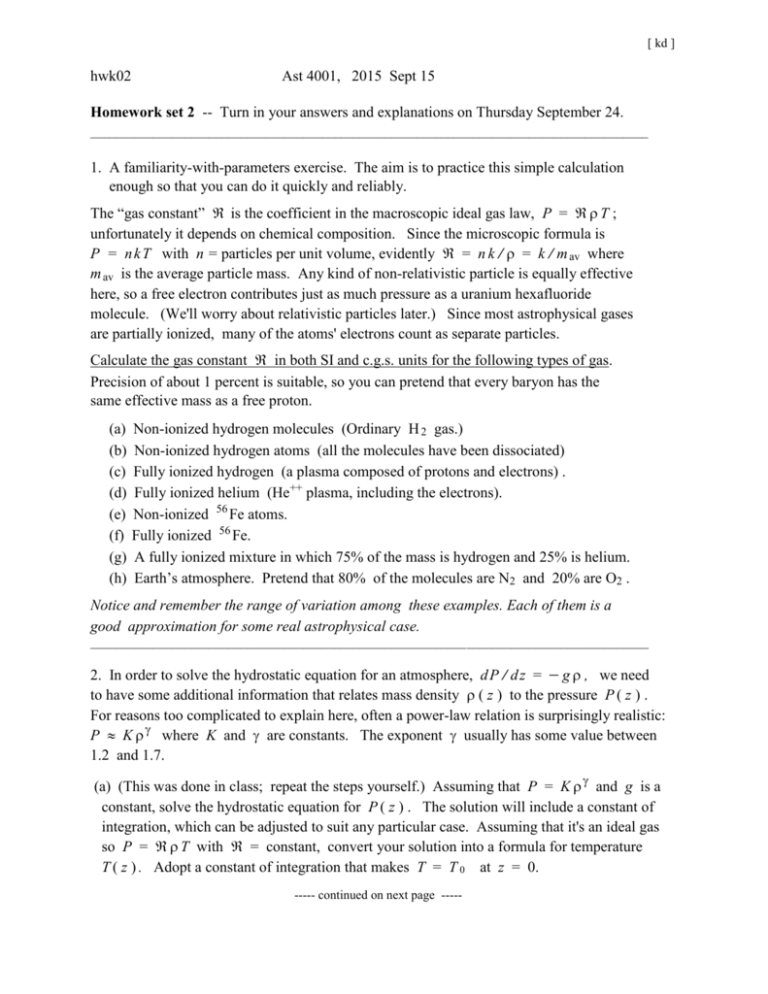
[ kd ] hwk02 Ast 4001, 2015 Sept 15 Homework set 2 -- Turn in your answers and explanations on Thursday September 24. _________________________________________________________________________________________ 1. A familiarity-with-parameters exercise. The aim is to practice this simple calculation enough so that you can do it quickly and reliably. The “gas constant” is the coefficient in the macroscopic ideal gas law, P = T ; unfortunately it depends on chemical composition. Since the microscopic formula is P = n k T with n = particles per unit volume, evidently = n k / = k / m av where m av is the average particle mass. Any kind of non-relativistic particle is equally effective here, so a free electron contributes just as much pressure as a uranium hexafluoride molecule. (We'll worry about relativistic particles later.) Since most astrophysical gases are partially ionized, many of the atoms' electrons count as separate particles. Calculate the gas constant in both SI and c.g.s. units for the following types of gas. Precision of about 1 percent is suitable, so you can pretend that every baryon has the same effective mass as a free proton. (a) (b) (c) (d) (e) (f) (g) (h) Non-ionized hydrogen molecules (Ordinary H 2 gas.) Non-ionized hydrogen atoms (all the molecules have been dissociated) Fully ionized hydrogen (a plasma composed of protons and electrons) . Fully ionized helium (He++ plasma, including the electrons). Non-ionized 56 Fe atoms. Fully ionized 56 Fe. A fully ionized mixture in which 75% of the mass is hydrogen and 25% is helium. Earth’s atmosphere. Pretend that 80% of the molecules are N2 and 20% are O2 . Notice and remember the range of variation among these examples. Each of them is a good approximation for some real astrophysical case. _________________________________________________________________________________________ 2. In order to solve the hydrostatic equation for an atmosphere, d P / d z = g , we need to have some additional information that relates mass density ( z ) to the pressure P ( z ) . For reasons too complicated to explain here, often a power-law relation is surprisingly realistic: P K where K and are constants. The exponent usually has some value between 1.2 and 1.7. (a) (This was done in class; repeat the steps yourself.) Assuming that P = K and g is a constant, solve the hydrostatic equation for P ( z ) . The solution will include a constant of integration, which can be adjusted to suit any particular case. Assuming that it's an ideal gas so P = T with = constant, convert your solution into a formula for temperature T ( z ) . Adopt a constant of integration that makes T = T 0 at z = 0. ----- continued on next page ----- 4001hwk02 - p2 (problem 2, continued) (b) Write a simple expression for the atmosphere's scale height H . Scale height is usually viewed as a rough order-of-magnitude parameter, and in this case a reasonable choice is the height z where T = T 0 / 2. (c) For atmospheric dynamics a critical quantity is the speed of sound w , defined in this case by w 2 = P / (Memorize the P / part!) Write a simple formula for H as a function of w and the other main parameters. (d) Suppose an object falls from height H , ignoring aerodynamic drag. What speed does it have when it reaches z = 0, and what does this have to do with part (c) above? __________________________________________________________________________________________ 3. A spectroscopic binary star system. It's best to do this problem in solar units. The conversion factor for velocities is 1 AU / yr = 4.74 km / s . The figure shows observed Doppler velocity curves, V ( t ), for a particular spectroscopic binary. Since the curves are sinusoidal, evidently it has a circular orbit. Use elementary physics to analyze the system with accuracy of about 2%. Explain your reasoning. (a) Estimate the two stars' mass ratio, M B / M A . (b) Assume that we see the orbit edge-on (orbit inclination i = 90° ). Based on the velocity amplitudes and the orbital period, calculate the separation between the two stars' centers. Express your answer in AU. (c) Deduce the total mass and the individual masses M A and M B , relative to the Sun. (In other words our unit of mass is M sun .) __________________________________________________________________________________________
